Themed collection Celebrating our 2020 Prize and Award winners

Ring-opening metathesis polymerization-induced self-assembly (ROMPISA)
Ring-opening metathesis polymerization-induced self-assembly (ROMPISA) has expanded the preparation of PISA nano-objects beyond radical polymerization approaches. In this highlight article, we summarize current advances and existing challenges in ROMPISA methodologies.
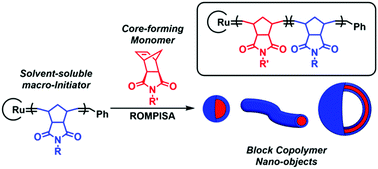
Chem. Commun., 2019,55, 9066-9071
https://doi.org/10.1039/C9CC04445K
Metal–organic framework gels and monoliths
This perspective links the synthesis of MOF Gels to the formation of MOF-monoliths and their resultant properties and application.

Chem. Sci., 2020,11, 310-323
https://doi.org/10.1039/C9SC04961D
Solution and on-surface synthesis of structurally defined graphene nanoribbons as a new family of semiconductors
Graphene nanoribbons (GNRs) with various structures and properties can be synthesized in solution or on surface.
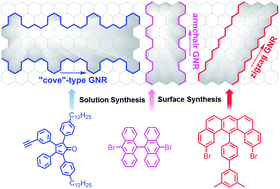
Chem. Sci., 2019,10, 964-975
https://doi.org/10.1039/C8SC03780A
Visual kinetic analysis
Naked-eye comparison of reaction profiles is a powerful tool to extract mechanistic information – FAQ, video tutorial and templated examples included.
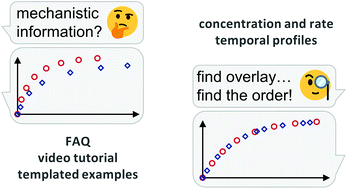
Chem. Sci., 2019,10, 348-353
https://doi.org/10.1039/C8SC04698K
Thermally assisted delayed fluorescence (TADF): fluorescence delayed is fluorescence denied
Thermally assisted delayed fluorescence (TADF) allows for efficient collection of both singlet and triplet excitons with both emitting through the singlet channel. TADF opens the door to photo- and electroluminescence efficiencies close to 100%.
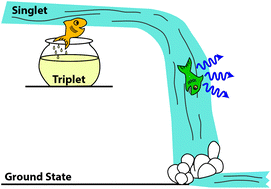
Mater. Horiz., 2020,7, 1210-1217
https://doi.org/10.1039/D0MH00276C
Tailoring the physicochemical properties of solution-processed transition metal dichalcogenides via molecular approaches
In this Feature Article we highlight the tremendous progress in solution-processed transition metal dichalcogenides and the molecular approaches employed to finely tune their physicochemical properties.
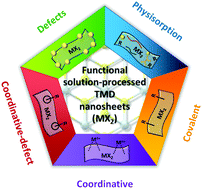
Chem. Commun., 2019,55, 8900-8914
https://doi.org/10.1039/C9CC03845K
Peculiar piezoelectricity of atomically thin planar structures
The real realm and recent advances of piezoelectricity after thinning down to two-dimensional materials have been introduced.
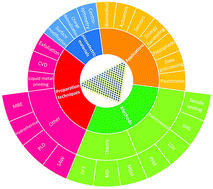
Nanoscale, 2020,12, 2875-2901
https://doi.org/10.1039/C9NR08063E
Carbon capture and conversion using metal–organic frameworks and MOF-based materials
This review summarizes recent advances and highlights the structure–property relationship on metal–organic framework-based materials for carbon dioxide capture and conversion.
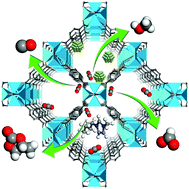
Chem. Soc. Rev., 2019,48, 2783-2828
https://doi.org/10.1039/C8CS00829A
Critical review of the molecular design progress in non-fullerene electron acceptors towards commercially viable organic solar cells
A critical analysis of the molecular design strategies employed in the recent progress of non-fullerene electron acceptors for organic photovoltaics.

Chem. Soc. Rev., 2019,48, 1596-1625
https://doi.org/10.1039/C7CS00892A
The geometry of periodic knots, polycatenanes and weaving from a chemical perspective: a library for reticular chemistry
The geometry of the most regular polycatenanes and weavings, as an extended family of discrete knots and catenanes, is described in terms of sticks and corners in their optimal embeddings.

Chem. Soc. Rev., 2018,47, 4642-4664
https://doi.org/10.1039/C7CS00695K
Fragmentation reactions using electrospray ionization mass spectrometry: an important tool for the structural elucidation and characterization of synthetic and natural products
This review article explores the most common fragmentation reactions for ions generated by ESI in positive and negative modes.
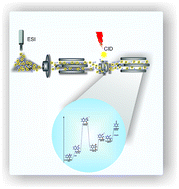
Nat. Prod. Rep., 2016,33, 432-455
https://doi.org/10.1039/C5NP00073D
Soft and hard templating of graphitic carbon nitride
This article reviews recent advances in templating of graphitic carbon nitride materials, with a particular focus on applications in photocatalysis.

J. Mater. Chem. A, 2015,3, 14081-14092
https://doi.org/10.1039/C5TA02156A
Biomimetic carbohydrate recognition
Binding saccharides with non-covalent interactions is challenging, especially in the natural medium of water, but synthetic carbohydrate receptors can be surprisingly effective.
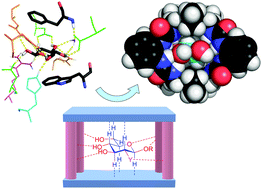
Chem. Soc. Rev., 2020,49, 2531-2545
https://doi.org/10.1039/C9CS00391F
Catalytic cascade reactions by radical relay
Catalytic radical relays are an attractive tool for the rapid construction of complex molecular architectures.
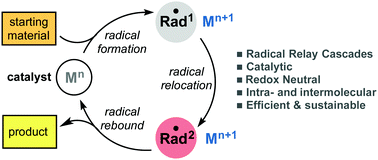
Chem. Soc. Rev., 2019,48, 4626-4638
https://doi.org/10.1039/C8CS00947C
Advances in the synthesis of nitroxide radicals for use in biomolecule spin labelling
The structures and properties of nitroxide radicals can be readily tailored for use as spin labels in biomolecular EPR spectroscopy.
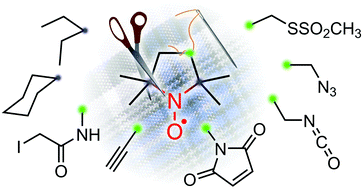
Chem. Soc. Rev., 2018,47, 668-680
https://doi.org/10.1039/C6CS00550K
Circular dichroism spectroscopy of membrane proteins
Circular dichroism spectra of helical bundle (red), beta barrel (blue), and mixed helical/sheet/unordered (green) membrane proteins.
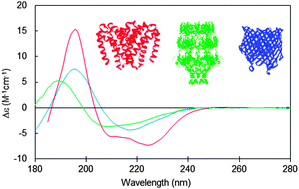
Chem. Soc. Rev., 2016,45, 4859-4872
https://doi.org/10.1039/C5CS00084J
The rise of the nanomaterial metabolite corona, and emergence of the complete corona
Metabolites present in the corona may play a key role in biological recognition of nanomaterials yet remain a much-overlooked aspect of the corona.
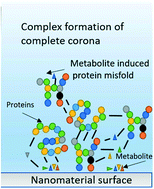
Environ. Sci.: Nano, 2020,7, 1041-1060
https://doi.org/10.1039/C9EN00938H
Coupled techniques for arsenic speciation in food and drinking water: a review
Arsenic is ubiquitous in nature appearing in various chemical forms.
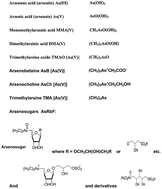
J. Anal. At. Spectrom., 2015,30, 102-118
https://doi.org/10.1039/C4JA00269E
Simultaneous non-covalent bi-functionalization of 1T-MoS2 ruled by electrostatic interactions: towards multi-responsive materials
Dual functionalization of chemically exfoliated MoS2 has been achieved by exploiting coulombic interactions among positively charged molecules and the negatively charged 2D flakes.

Chem. Commun., 2020,56, 6878-6881
https://doi.org/10.1039/D0CC02371J
High and reversible SO2 capture by a chemically stable Cr(III)-based MOF
MIL-101(Cr)-4F(1%) shows a high uptake and high chemical stability to dry and humid SO2 and a remarkable cyclability. In situ DRIF spectroscopy upon the adsorption of CO identified the preferential adsorption sites for this MOF material.
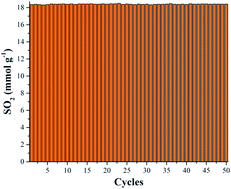
J. Mater. Chem. A, 2020,8, 11515-11520
https://doi.org/10.1039/C9TA13524C
Selective hydrogenation of lignin-derived compounds under mild conditions
A key challenge in the production of lignin-derived chemicals is to reduce the energy intensive processes used in their production.
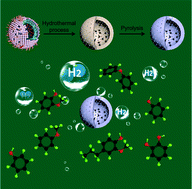
Green Chem., 2020,22, 3069-3073
https://doi.org/10.1039/D0GC00121J
A caged E3 ligase ligand for PROTAC-mediated protein degradation with light
Caging of a widely used Von Hippel Lindau E3 ligase ligand for targeted protein degradation with PROTACs allows light-activated proteolysis.
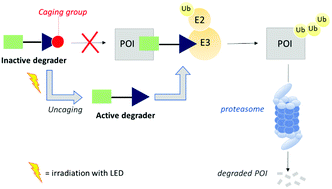
Chem. Commun., 2020,56, 5532-5535
https://doi.org/10.1039/D0CC00523A
Reductive dehydrocoupling of diphenyltin dihydride with LiAlH4: selective synthesis and structures of the first bicyclo[2.2.1]heptastannane-1,4-diide and bicyclo[2.2.2]octastannane-1,4-diide
The reaction of diphenyltin dihydride with LiAlH4 gives access to a set of charged tin cages as their lithium salts.
![Graphical abstract: Reductive dehydrocoupling of diphenyltin dihydride with LiAlH4: selective synthesis and structures of the first bicyclo[2.2.1]heptastannane-1,4-diide and bicyclo[2.2.2]octastannane-1,4-diide](/en/Image/Get?imageInfo.ImageType=GA&imageInfo.ImageIdentifier.ManuscriptID=C9CC07976A&imageInfo.ImageIdentifier.Year=2020)
Chem. Commun., 2020,56, 336-339
https://doi.org/10.1039/C9CC07976A
The dilemma between acid and base catalysis in the synthesis of benzimidazole from o-phenylenediamine and carbon dioxide
Synthesis of azoles from ortho-substituted anilines and CO2 is limited by the cyclization reaction and not by CO2 reduction.
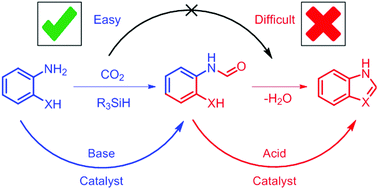
Chem. Commun., 2019,55, 13089-13092
https://doi.org/10.1039/C9CC06156H
Band gap modulation in zirconium-based metal–organic frameworks by defect engineering
A simple defect engineering approach to systematically tune the band gap of the prototypical zirconium-based metal–organic framework UiO-66 is reported. Defect engineered materials display enhanced photocatalytic activity.
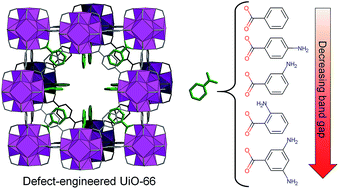
J. Mater. Chem. A, 2019,7, 23781-23786
https://doi.org/10.1039/C9TA05216J
Bioinspired hydrogel microfibres colour-encoded with colloidal crystals
The integration of microfluidic spinning and colloidal crystal microdots enable the colour-encoded hydrogel microfibres with facile and flexible manipulation of the encoding.
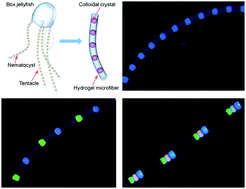
Mater. Horiz., 2019,6, 1938-1943
https://doi.org/10.1039/C9MH00528E
One-pot synthesis of high molar activity 6-[18F]fluoro-L-DOPA by Cu-mediated fluorination of a BPin precursor
A one-pot two-step synthesis of 6-[18F]fluoro-L-DOPA has been developed, involving Cu-mediated radiofluorination of the corresponding pinacol boronate ester precursor, and validated for production of doses for human use.
![Graphical abstract: One-pot synthesis of high molar activity 6-[18F]fluoro-l-DOPA by Cu-mediated fluorination of a BPin precursor](/en/Image/Get?imageInfo.ImageType=GA&imageInfo.ImageIdentifier.ManuscriptID=C9OB01758E&imageInfo.ImageIdentifier.Year=2019)
Org. Biomol. Chem., 2019,17, 8701-8705
https://doi.org/10.1039/C9OB01758E
An organic super-electron-donor as a high energy density negative electrolyte for nonaqueous flow batteries
An organic “super-electron-donor” is well-suited as a negative electrolyte for nonaqueous redox flow batteries, with a highly negative 2+/0 reduction potential, a low mass per electron stored, and good solubility in CH3CN in both redox states.
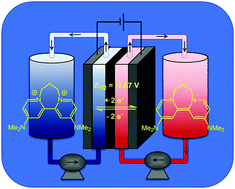
Chem. Commun., 2019,55, 11037-11040
https://doi.org/10.1039/C9CC06080D
Microcalorimetry and fluorescence show stable peptide nucleic acid (PNA) duplexes in high organic content solvent mixtures
Peptide nucleic acid (PNA) hybridisation is highly tolerant to the addition of organic solvent. This finding suggests that PNA could enable the use of a range of water-sensitive chemistries in nucleic acid templating applications.
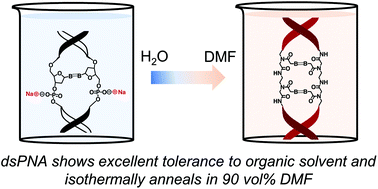
Org. Biomol. Chem., 2019,17, 7874-7877
https://doi.org/10.1039/C9OB01460H
Phenanthro[9,10-d]triazole and imidazole derivatives: high triplet energy host materials for blue phosphorescent organic light emitting devices
A class of wide bandgap host materials is introduced as an alternative to carbazole-based hosts to enhance the efficiency and transport properties of organic light emitting diodes (OLEDs).
![Graphical abstract: Phenanthro[9,10-d]triazole and imidazole derivatives: high triplet energy host materials for blue phosphorescent organic light emitting devices](/en/Image/Get?imageInfo.ImageType=GA&imageInfo.ImageIdentifier.ManuscriptID=C9MH00195F&imageInfo.ImageIdentifier.Year=2019)
Mater. Horiz., 2019,6, 1179-1186
https://doi.org/10.1039/C9MH00195F
High and energy-efficient reversible SO2 uptake by a robust Sc(III)-based MOF
MFM-300(Sc) was demonstrated to be an optimal adsorbent for SO2 capture combining high uptake, good stability and excellent cyclability (facile regeneration at only room temperature). A drastic enhancement on its SO2 uptake (40%) was achieved when a small amount of EtOH was preliminary adsorbed.
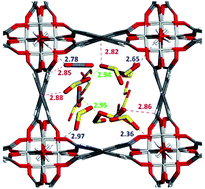
J. Mater. Chem. A, 2019,7, 15580-15584
https://doi.org/10.1039/C9TA02585E
Enzymatic synthesis of N-acetyllactosamine from lactose enabled by recombinant β1,4-galactosyltransferases
Synthesis of LacNAc with reversible GalTs.

Org. Biomol. Chem., 2019,17, 5920-5924
https://doi.org/10.1039/C9OB01089K
Reversible insertion of CO into an aluminium–carbon bond
A [2.2.1] aluminium metallobicycle is capable of reversibly inserting CO to form a [2.2.2] metallobicycle at 100 °C.
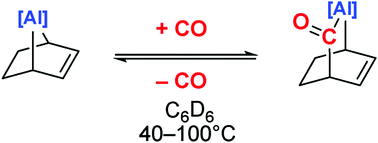
Chem. Commun., 2019,55, 6181-6184
https://doi.org/10.1039/C9CC02818H
Dithieno[3,2-b:2′,3′-d]arsole-containing conjugated polymers in organic photovoltaic devices
Dithieno[3,2-b:2′,3′-d]arsole containing donor polymers are reported and investigated in organic solar cell devices for the first time.
![Graphical abstract: Dithieno[3,2-b:2′,3′-d]arsole-containing conjugated polymers in organic photovoltaic devices](/en/Image/Get?imageInfo.ImageType=GA&imageInfo.ImageIdentifier.ManuscriptID=C9DT01496A&imageInfo.ImageIdentifier.Year=2019)
Dalton Trans., 2019,48, 6676-6679
https://doi.org/10.1039/C9DT01496A
Reduction of 1,3,5,7-cyclooctatetraene by a molecular calcium hydride: an even electron polarised insertion/deprotonation mechanism
The reductive aromatisation of 1,3,5,7-cyclooctatetraene by a dimeric calcium hydride occurs via two electron steps and does not necessitate the formation of radical intermediates.

Chem. Commun., 2019,55, 5732-5735
https://doi.org/10.1039/C9CC02418B
Highly selective chromoionophores for ratiometric Na+ sensing based on an oligoethyleneglycol bridged bithiophene detection unit
A series of nine novel Na+ selective ratiometric optical probes (S1–S9) have been developed and evaluated both by computational and experimental means.

J. Mater. Chem. C, 2019,7, 5359-5365
https://doi.org/10.1039/C8TC06000B
Palladium-catalysed ligand-free reductive Heck cycloisomerisation of 1,6-en-α-chloro-enamides
The first example of an intramolecular hydroarylation of 1,6-en-α-chloro-enamides was achieved by a palladium-catalysed ligand-free reductive Heck cycloisomerisation with no competing Heck-cyclised by-product.

Chem. Commun., 2019,55, 3733-3736
https://doi.org/10.1039/C9CC00537D
Actinide-transition metal bonding in heterobimetallic uranium– and thorium–molybdenum paddlewheel complexes
Heterobimetallic An–Mo (An = U, Th) paddlewheel complexes featuring dative Mo → An bonds are reported.
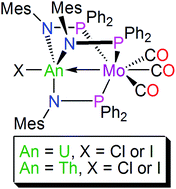
Chem. Commun., 2018,54, 13515-13518
https://doi.org/10.1039/C8CC05268A
Methanol as hydrogen source: transfer hydrogenation of aromatic aldehydes with a rhodacycle
A rhodacycle catalyses efficient hydrogenation of aldehydes, deriving the hydrogen from methanol.
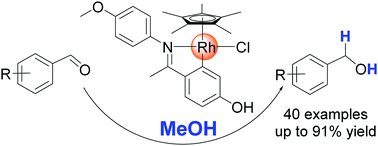
Chem. Commun., 2018,54, 11805-11808
https://doi.org/10.1039/C8CC06612D
Hydrogen peroxide production via a redox reaction of N,N′-dimethyl-2,6-diaza-9,10-anthraquinonediium by addition of bisulfite
We demonstrate that bisulfite can be used for reduction of a highly electrophilic anthraquinone derivative, N,N′-dimethyl-2,6-diaza-9,10-anthraquinonediium (DAAQ), and subsequent autoxidation generates an equivalent of hydrogen peroxide.
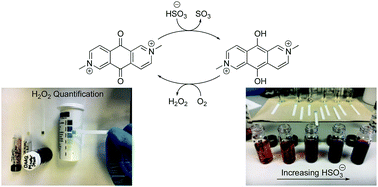
Chem. Commun., 2018,54, 11204-11207
https://doi.org/10.1039/C8CC05548C
Reductive cyclisations of amidines involving aminal radicals
The first general study of aminal radical cyclisations, triggered by reduction of amidines with SmI2, delivers quinazolinones with complete diastereocontrol.

Chem. Commun., 2018,54, 10160-10163
https://doi.org/10.1039/C8CC05178J
Elucidation of the roles of conserved residues in the biosynthesis of the lasso peptide paeninodin
Substrate binding assays, in vitro proteolytic processing assays, and heterologous lasso peptide production were used to investigate the roles of conserved precursor peptide residues during paeninodin maturation.
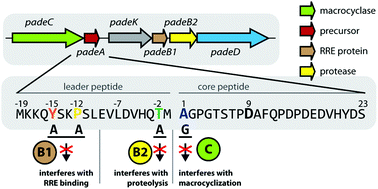
Chem. Commun., 2018,54, 9007-9010
https://doi.org/10.1039/C8CC04411B
Highly Lewis acidic cationic alkaline earth metal complexes
“Naked” cationic β-diketiminate Mg and Ca complexes possess high Lewis acidities and bind strongly to neutral benzene or alkyne ligands.
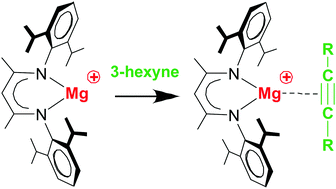
Chem. Commun., 2018,54, 8685-8688
https://doi.org/10.1039/C8CC04083D
Singular wavelength dependence on the sensitization of lanthanides by graphene quantum dots
Graphene quantum dots can photosensitize the emission of terbium cations with a photoluminescence efficiency that increases at shorter wavelengths.
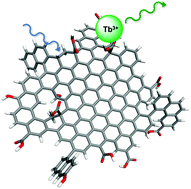
Chem. Commun., 2018,54, 4325-4328
https://doi.org/10.1039/C8CC01264D
Predicting the frequency of extreme air quality events
A new method for predicting the frequency of extreme air quality events is proposed.
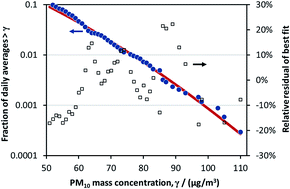
Environ. Sci.: Processes Impacts, 2017,19, 1499-1504
https://doi.org/10.1039/C7EM00401J
Structural insights into the EthR–DNA interaction using native mass spectrometry
The interaction between Mycobacterium tuberculosis EthR and its operator DNA has been studied by native mass spectrometry, revealing an interesting stoichiometry.

Chem. Commun., 2017,53, 3527-3530
https://doi.org/10.1039/C7CC00804J
Tandem Rh-catalysis: decarboxylative β-keto acid and alkyne cross-coupling
Herein, we describe a regioselective Rh-catalyzed decarboxylative cross-coupling of β-keto acids and alkynes to access branched γ,δ-unsaturated ketones.

Chem. Commun., 2016,52, 5836-5839
https://doi.org/10.1039/C6CC02522F
Dithieno[2,3-d;2′,3′-d]benzo[2,1-b;3,4-b‘]dithiophene: a novel building-block for a planar copolymer
A planar heteroacene building block, dithieno[2,3-d;2′,3′-d′]benzo[1,2-b;3,4-b′]dithiophene (DTmBDT), is reported via a facile synthetic procedure.
![Graphical abstract: Dithieno[2,3-d;2′,3′-d]benzo[2,1-b;3,4-b‘]dithiophene: a novel building-block for a planar copolymer](/en/Image/Get?imageInfo.ImageType=GA&imageInfo.ImageIdentifier.ManuscriptID=C6PY00023A&imageInfo.ImageIdentifier.Year=2016)
Polym. Chem., 2016,7, 1545-1548
https://doi.org/10.1039/C6PY00023A
Heteroleptic actinocenes: a thorium(IV)–cyclobutadienyl–cyclooctatetraenyl–di-potassium-cyclooctatetraenyl complex
We report the first thorium–cyclobutadienyl complex, a new type of heteroleptic actinocene, that exhibits ‘an alkene-like’ thorium–η2-cyclooctatetraenyl interaction.
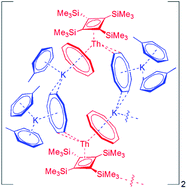
Chem. Sci., 2020,11, 6789-6794
https://doi.org/10.1039/D0SC02479A
Two-dimensional, conductive niobium and molybdenum metal–organic frameworks
Incorporation of Nb and Mo into conductive metal–organic frameworks enables utilization of the enhanced covalency, redox activity, and spin–orbit coupling of late-row metals to improve the transport and magnetic properties of these materials.
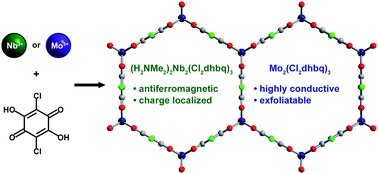
Chem. Sci., 2020,11, 6690-6700
https://doi.org/10.1039/D0SC02515A
Self-adjusting binding pockets enhance H2 and CH4 adsorption in a uranium-based metal–organic framework
Optimizing binding pocket geometries in MOFs for ideal interaction with target molecules remains a tremendous synthetic challenge. In the new MOF U(bdc)2, self-adjusting binding pockets flex to bind differently sized guests H2, CH4 and DMF.

Chem. Sci., 2020,11, 6709-6716
https://doi.org/10.1039/D0SC02394A
Kinetics of cooperative CO2 adsorption in diamine-appended variants of the metal–organic framework Mg2(dobpdc)
An in-depth investigation of the CO2 adsorption kinetics of a promising class of cooperative carbon capture materials offers new insight into their structure-performance properties.
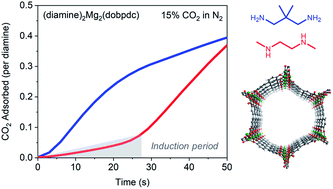
Chem. Sci., 2020,11, 6457-6471
https://doi.org/10.1039/D0SC01087A
Observation of binding of carbon dioxide to nitro-decorated metal–organic frameworks
Synergistic effects between –NO2 groups and open metal sites lead to optimal binding of CO2 molecules within MFM-102-NO2via hydrogen bonding to C–H groups.
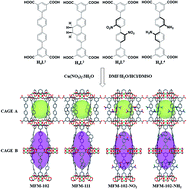
Chem. Sci., 2020,11, 5339-5346
https://doi.org/10.1039/C9SC04294F
Outer-sphere effects on ligand-field excited-state dynamics: solvent dependence of high-spin to low-spin conversion in [Fe(bpy)3]2+
Time-resolved spectroscopic measurements of ground-state recovery for [Fe(bpy)3]2+ reveal that the solvent can induce an outer-sphere reorganization energy effect on excited-state dynamics involving metal-centered ligand-field electronic states.
![Graphical abstract: Outer-sphere effects on ligand-field excited-state dynamics: solvent dependence of high-spin to low-spin conversion in [Fe(bpy)3]2+](/en/Image/Get?imageInfo.ImageType=GA&imageInfo.ImageIdentifier.ManuscriptID=D0SC01506G&imageInfo.ImageIdentifier.Year=2020)
Chem. Sci., 2020,11, 5191-5204
https://doi.org/10.1039/D0SC01506G
Mixing and matching genes of marine and terrestrial origin in the biosynthesis of the mupirocin antibiotics
Where the sea meets the land: the mupirocin biosynthetic gene cluster (BGC) from the terrestrial bacterium Pseudomonas fluorescens was repurposed via a plug-and-play approach with heterologous genes from the marine strain that produces thiomarinol.
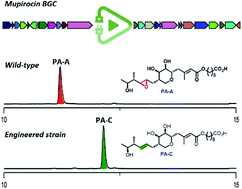
Chem. Sci., 2020,11, 5221-5226
https://doi.org/10.1039/C9SC06192D
Observations of tetrel bonding between sp3-carbon and THF
sp3-C⋯THF tetrel bonding was observed in the crystalline state and in the gas phase. Density functional calculations revealed interaction energies up to −11.2 kcal mol−1 and showed that these adducts are held together mainly by electrostatics.

Chem. Sci., 2020,11, 5289-5293
https://doi.org/10.1039/D0SC01559H
Functional group interaction profiles: a general treatment of solvent effects on non-covalent interactions
Functional group interaction profiles are a quantitative tool for predicting the effect of solvent on the free energy changes associated with non-covalent interactions.
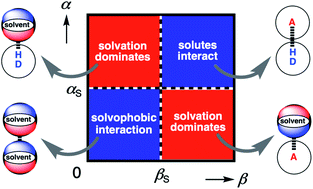
Chem. Sci., 2020,11, 4456-4466
https://doi.org/10.1039/D0SC01288B
SAXS studies of the thermally-induced fusion of diblock copolymer spheres: formation of hybrid nanoparticles of intermediate size and shape
Dilute dispersions of poly(lauryl methacrylate)-poly(benzyl methacrylate) diblock copolymer spheres of differing mean diameter are mixed and thermally annealed at 150 °C to produce either spherical or non-spherical nanoparticles of intermediate size.

Chem. Sci., 2020,11, 4312-4321
https://doi.org/10.1039/D0SC00569J
Proton-coupled electron transfer across benzimidazole bridges in bioinspired proton wires
Experimental and theoretical methods characterize the thermodynamics of electrochemically driven proton-coupled electron transfer processes in bioinspired constructs involving multiple proton translocations over Grotthus-type proton wires.
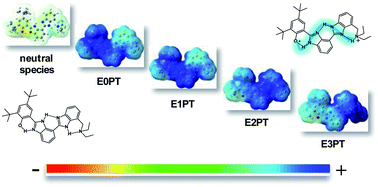
Chem. Sci., 2020,11, 3820-3828
https://doi.org/10.1039/C9SC06010C
Selective glucose sensing in complex media using a biomimetic receptor
A highly selective receptor, circular dichroism and chiral competition are combined in this versatile method for D-glucose analysis.

Chem. Sci., 2020,11, 3223-3227
https://doi.org/10.1039/C9SC05406E
Dynamic design: manipulation of millisecond timescale motions on the energy landscape of cyclophilin A
Molecular simulations were used to design large scale loop motions in the enzyme cyclophilin A and NMR and biophysical methods were employed to validate the models.
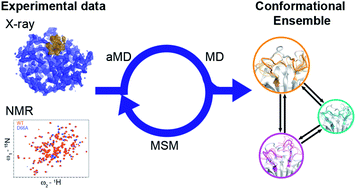
Chem. Sci., 2020,11, 2670-2680
https://doi.org/10.1039/C9SC04696H
A borane-mediated palladium-catalyzed reductive allylic alkylation of α,β-unsaturated carbonyl compounds
A palladium-catalyzed allylation of ester-derived boron enolates, which is prepared through 1,4-reduction of α,β-unsaturated ester analogues.

Chem. Sci., 2020,11, 2136-2140
https://doi.org/10.1039/C9SC05970A
Sulfoxide-mediated oxidative cross-coupling of phenols
A metal-free, oxidative coupling of phenols with various nucleophiles, including arenes, 1,3-diketones and other phenols, is reported.

Chem. Sci., 2020,11, 2001-2005
https://doi.org/10.1039/C9SC05668H
A photo-regulated aptamer sensor for spatiotemporally controlled monitoring of ATP in the mitochondria of living cells
A photo-regulated ATP sensor coupled with cationic DQAsomes is developed for spatiotemporally controlled imaging of ATP in the mitochondria of living cells.
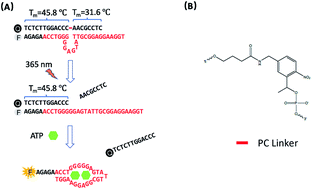
Chem. Sci., 2020,11, 713-720
https://doi.org/10.1039/C9SC04773E
Chemical biology tools for probing transcytosis at the blood–brain barrier
A BBB vehicle library is validated, establishing a SAR for uptake. Merging AMT/RMT motifs chemoselectively increased permeability.
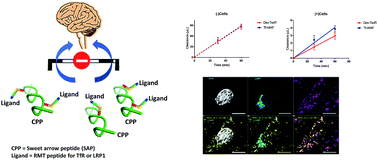
Chem. Sci., 2019,10, 10772-10778
https://doi.org/10.1039/C9SC04024B
Electrochemical C–H bond activation via cationic iridium hydride pincer complexes
Electrochemical C–H activation proceeds at room temperature upon oxidation of a pincer-ligated iridium complex in the presence of base.
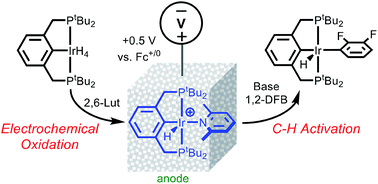
Chem. Sci., 2019,10, 9326-9330
https://doi.org/10.1039/C9SC03076J
Mechanistic studies of a “Declick” reaction
Detailed kinetic analysis reveals a complex multi-step mechanism for an amine-thiol “declick” reaction.
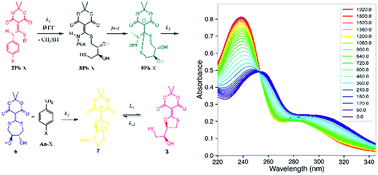
Chem. Sci., 2019,10, 8817-8824
https://doi.org/10.1039/C9SC00690G
The partial dehydrogenation of aluminium dihydrides
The reactions of a series of β-diketiminate stabilised aluminium dihydrides with ruthenium bis(phosphine), palladium bis(phosphine) and palladium cyclopentadienyl complexes is reported.
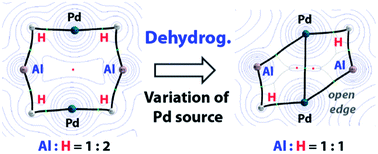
Chem. Sci., 2019,10, 8083-8093
https://doi.org/10.1039/C9SC02750E
Development of 68Ga-labelled ultrasound microbubbles for whole-body PET imaging
We report a rapid and efficient method for labelling ultrasound microbubble (MB) agents with a generator-produced PET isotope using a facile ligation between a trans-cyclooctene-modified phospholipid and a new 68Ga-HBED-CC-tetrazine tracer. This method provides accessible solutions for in vivo tracking of MBs.

Chem. Sci., 2019,10, 5603-5615
https://doi.org/10.1039/C9SC00684B
Modulating proton diffusion and conductivity in metal–organic frameworks by incorporation of accessible free carboxylic acid groups
The proton conductivity of barium-based MOFs MFM-510 to MFM-512 are analysed in relation to the absence and presence of free –COOH groups in the pores.
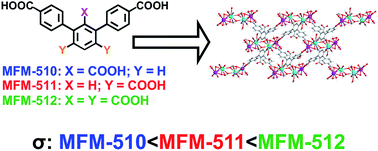
Chem. Sci., 2019,10, 1492-1499
https://doi.org/10.1039/C8SC03022G
About this collection
In celebration of the 2020 Royal Society of Chemistry prizes and awards, we have collected together some of the exciting research recently published by the winners. This collection showcases articles authored by the winners from across the Royal Society of Chemistry’s journals portfolio – these articles are free to access until 30th September 2020.
Learn more about the 2020 Royal Society of Chemistry prizes and award winners here.
Why not also have a look at last year’s collection of articles by our 2019 winners here.